Japan is a land of timeless traditions and cutting-edge innovation, where every corner holds a story waiting to be discovered. From the bustling streets of Tokyo to the serene temples of Kyoto, my journey through this fascinating country unveiled a tapestry of experiences that left a lasting impression. Here are 20 remarkable things I did in Japan that truly blew me away.
1. Cherry Blossom Viewing in Kyoto
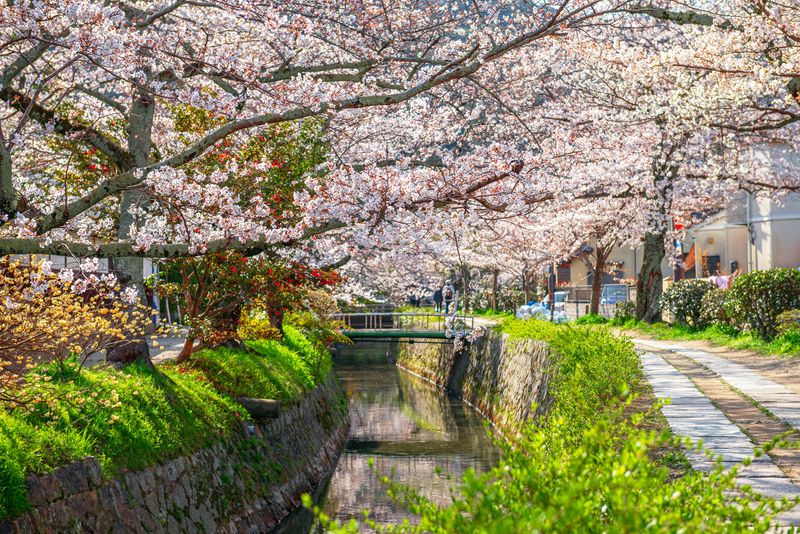
Imagine a world painted in soft pink hues. This was my reality as I strolled through the cherry blossom-laden streets of Kyoto. Their delicate petals fluttered gently to the ground, creating a carpet of blossoms underfoot. The air was filled with the sweet fragrance of sakura, enchanting all who passed by.
As I sat beneath an ancient cherry tree, I couldn’t help but feel a deep sense of peace and connection to nature. The tradition of hanami, or flower viewing, is not just about admiring the blossoms but also about cherishing the fleeting beauty of life. It’s a moment of reflection and appreciation, a time when people come together to celebrate the arrival of spring.
Did you know that the cherry blossom is Japan’s national flower? Each year, millions anticipate their bloom, and festivals across the country mark the occasion. Kyoto, with its historic temples and gardens, offers one of the most picturesque settings for this annual spectacle.
2. Exploring Shibuya Crossing
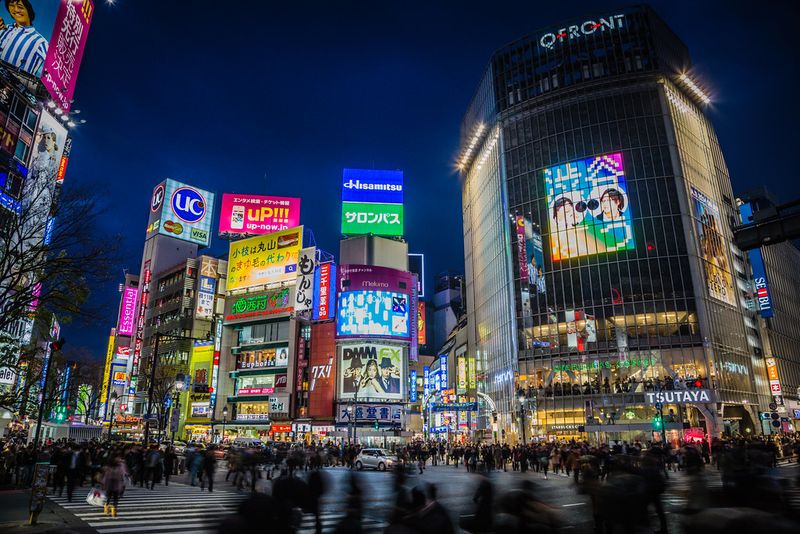
Shibuya Crossing is the heart of Tokyo’s vibrant energy, a place where the city’s pulse is palpable. As I stood at the edge, waiting for the signal, I was in awe of the organized chaos that unfolded before me. Hundreds of people moved in every direction, yet there was a rhythm, a dance to the madness.
The neon lights and giant screens projected a kaleidoscope of colors, turning the night into day. This iconic crossing is more than just a pedestrian scramble; it’s a symbol of Tokyo’s blend of tradition and modernity, where ancient history meets futuristic technology.
I found myself captivated by the harmony amidst the hustle. While it might seem overwhelming, there’s something exhilarating about being part of this human ebb and flow. Shibuya Crossing is a testament to Tokyo’s dynamism, a place where every step tells a story.
3. Visiting the Historic Temples of Nara
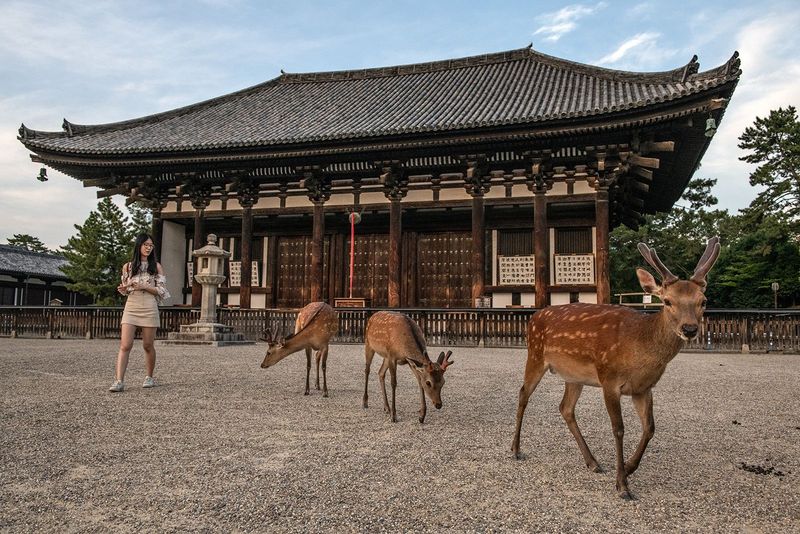
In Nara, history feels alive, whispering tales of the past through its ancient temples and wandering deer. My visit to Todai-ji Temple, home to a colossal bronze Buddha, was a journey back in time. The temple’s grandeur is matched only by its spiritual ambiance, a place where serenity reigns supreme.
As I walked the temple grounds, friendly deer greeted me, a symbol of Nara’s harmony with nature. These gentle creatures roam freely, adding a whimsical charm to the sacred setting. Feeding them shika senbei, or deer crackers, is a delightfully interactive experience.
Beyond the temple, Nara Park offers expansive greenery, a peaceful retreat where history, spirituality, and nature coexist. Each step in Nara is a step through Japan’s rich cultural tapestry, a reminder of the enduring legacy of its ancient capital.
4. Experiencing the Tranquility of Arashiyama Bamboo Grove
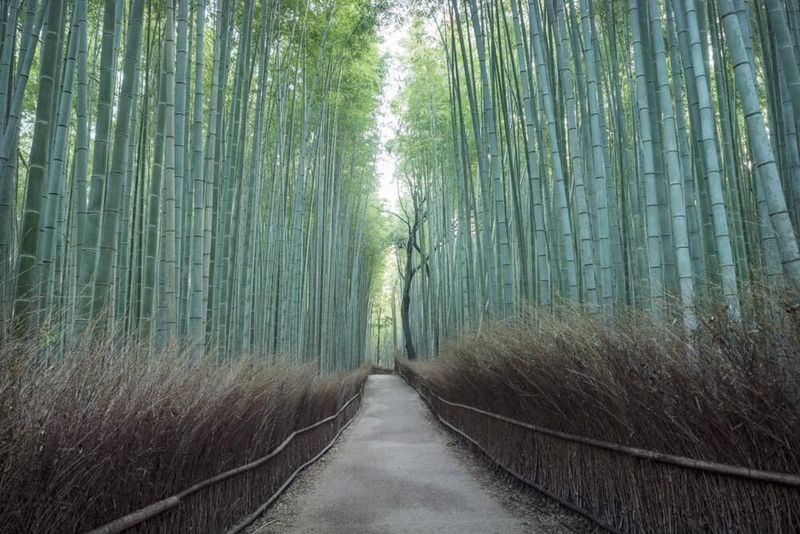
Walking through Arashiyama Bamboo Grove in Kyoto was like stepping into another world. Towering bamboo stalks swayed gently in the breeze, their leaves whispering secrets of the past. The soft rustling created a natural symphony, a melody that calmed the soul.
The dappled sunlight filtered through the canopy, casting intricate patterns on the path below. This serene setting is a testament to nature’s artistry, a place where time seems to stand still. It’s easy to lose oneself in the grove’s tranquility, finding peace in its simple elegance.
Despite its popularity, there’s an undeniable serenity that envelops you, a quiet reminder of nature’s enduring beauty. Arashiyama Bamboo Grove is more than just a scenic spot; it’s a sanctuary for the spirit, a place to pause and reflect amidst nature’s grandeur.
5. Savoring Sushi at Tsukiji Outer Market
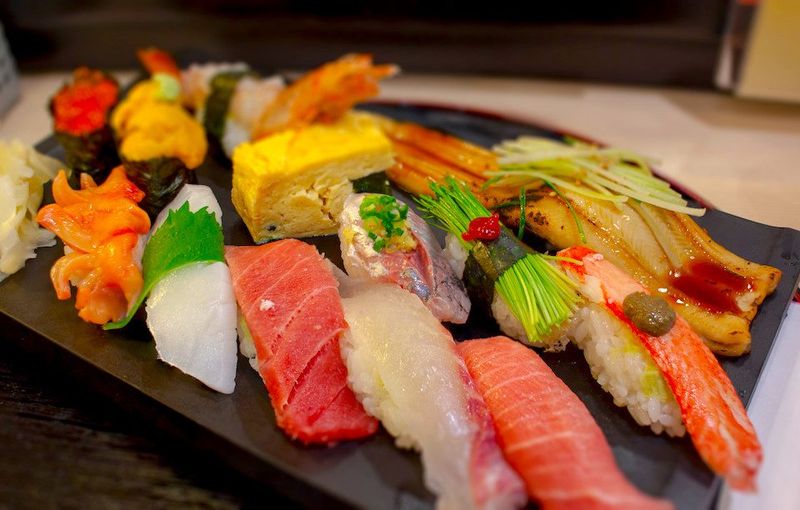
The Tsukiji Outer Market in Tokyo is a paradise for sushi lovers, a place where freshness and flavor reign supreme. As I wandered through the bustling stalls, the enticing aroma of seafood filled the air. Each sushi piece was a work of art, crafted with precision and passion.
I watched as a skilled sushi chef prepared nigiri with deft hands, a master of his craft. The combination of tender fish atop perfectly seasoned rice was a taste revelation, a dance of flavors on the palate. It was here that I truly understood the artistry and dedication behind each bite.
Did you know that Tsukiji was once the world’s largest fish market? While the inner wholesale market has moved, the outer market remains a vibrant hub for fresh seafood and gourmet delicacies. It’s a culinary journey not to be missed, a feast for the senses in every way.
6. Riding the Shinkansen Bullet Train
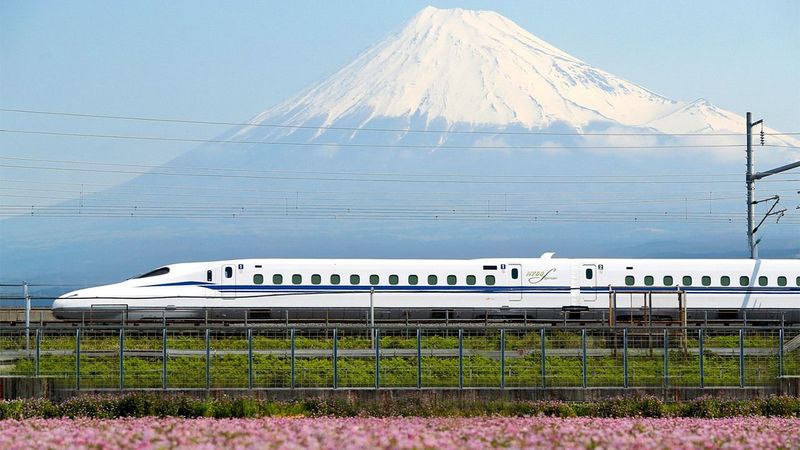
The Shinkansen, Japan’s iconic bullet train, is a marvel of engineering and efficiency. As I settled into my seat, I marveled at the train’s sleek design and punctuality. It whisked me through the Japanese countryside at incredible speeds, turning travel into an experience itself.
The scenery blurred past the windows, a changing canvas of urban landscapes and natural beauty. Mount Fuji made a majestic appearance, its snow-capped peak a testament to Japan’s scenic wonders. The ride was smooth and comfortable, a perfect blend of technology and luxury.
Beyond speed, the Shinkansen symbolizes Japan’s commitment to innovation and excellence. It’s more than just a mode of transport; it’s a cultural icon, representing the country’s forward-thinking spirit and dedication to connectivity.
7. Relaxing in an Onsen Hot Spring
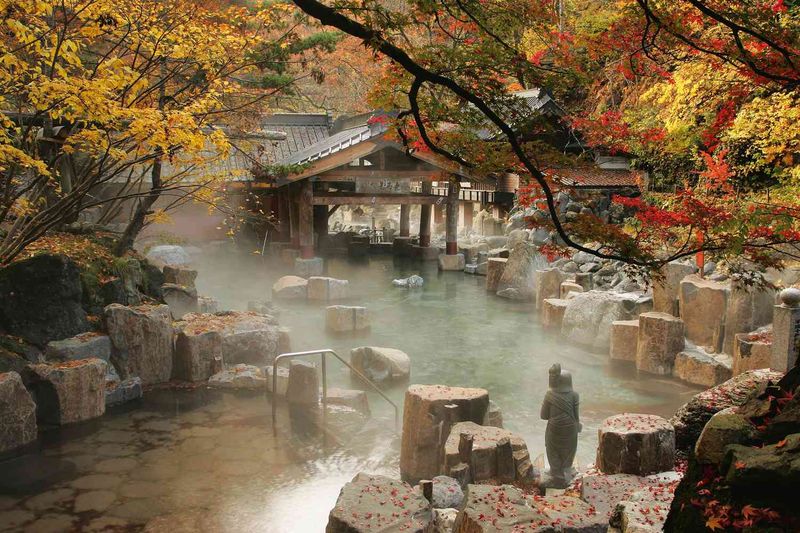
Experiencing an onsen in Japan is a journey into relaxation and rejuvenation. As I soaked in the warm mineral-rich waters, the stresses of the world melted away. The onsen’s serene setting, often surrounded by nature, enhanced the feeling of tranquility and escape.
The ritual of bathing is steeped in tradition, a practice that emphasizes purification and renewal. Each visit to an onsen is a moment to unwind, to let the soothing waters work their magic on both body and soul. It’s a cultural experience that connects you to Japan’s natural wonders.
Whether nestled in the mountains or by the sea, an onsen offers a unique way to appreciate Japan’s landscapes. It’s a chance to pause and reflect, to enjoy the simple pleasure of being immersed in nature’s embrace. This age-old tradition is a testament to Japan’s harmony with its surroundings.
8. Admiring the Art of Ikebana
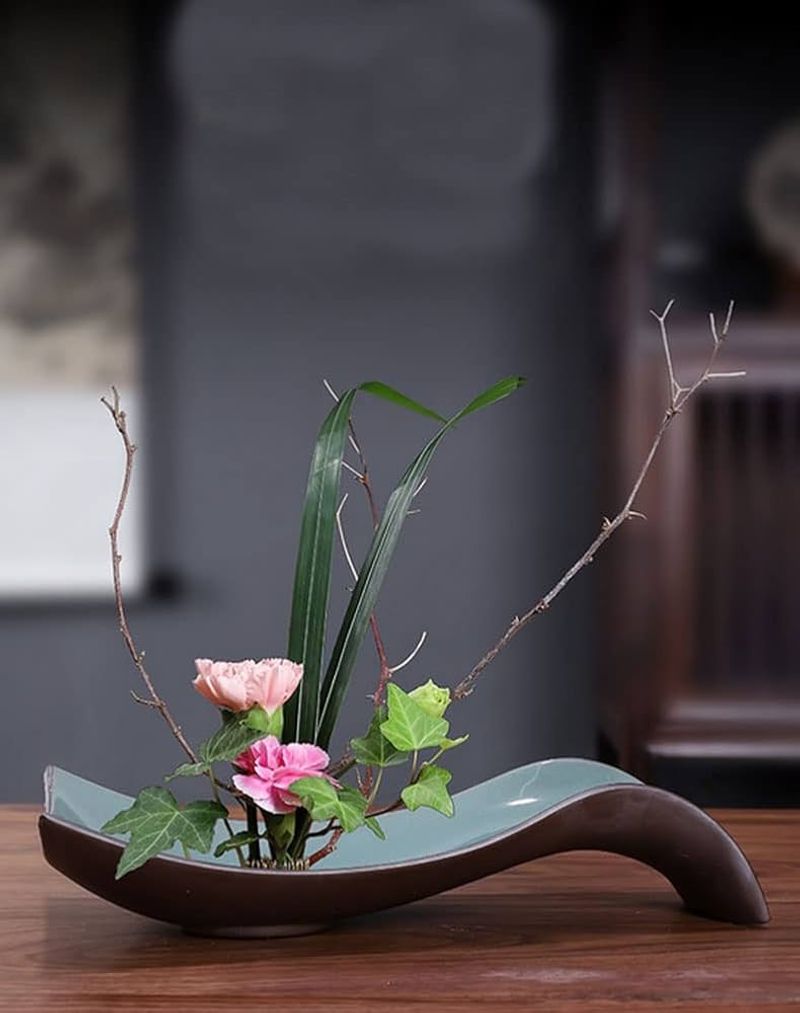
Ikebana, the art of Japanese flower arrangement, is a celebration of simplicity and elegance. As I observed an ikebana master at work, I was struck by the meticulous attention to balance and harmony. Each stem was placed with intention, creating a living sculpture that told a story.
This ancient art form goes beyond mere aesthetics; it’s a meditation on nature’s beauty and impermanence. The choice of flowers, the angles, and the empty spaces all contribute to a profound expression of creativity and mindfulness.
Ikebana taught me to see flowers in a new light, to appreciate their subtle beauty and the stories they can tell. It’s a reminder of the delicate dance between life and art, a tradition that continues to inspire and captivate with its grace and depth.
9. Walking Through Fushimi Inari Shrine
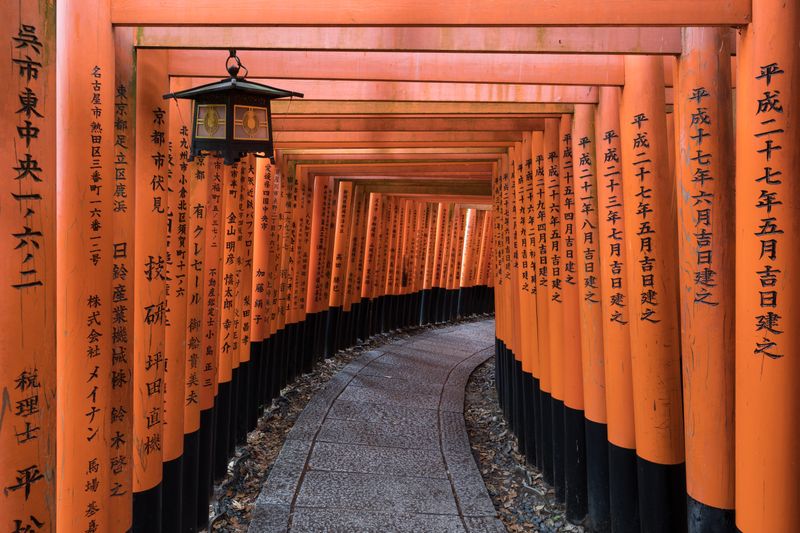
The Fushimi Inari Shrine in Kyoto is a sight to behold, with its iconic vermilion torii gates forming a seemingly endless path. As I stepped through the gates, I was enveloped in a sense of wonder and spirituality. Each gate bore the name of a donor, a testament to the shrine’s deep cultural significance.
The pathway led me through a lush forest, weaving up the sacred Mount Inari. The tranquility of the surroundings offered moments of introspection and peace. It was easy to lose myself in the rhythm of my footsteps, feeling a connection to the countless pilgrims who walked this path before me.
Fushimi Inari is not just a shrine; it’s a journey through history and devotion. The vibrant gates symbolize prosperity and good fortune, a beacon for those seeking blessings and guidance. It’s a place where tradition and spirituality intertwine, leaving an indelible mark on all who visit.
10. Tasting Ramen at Ichiran
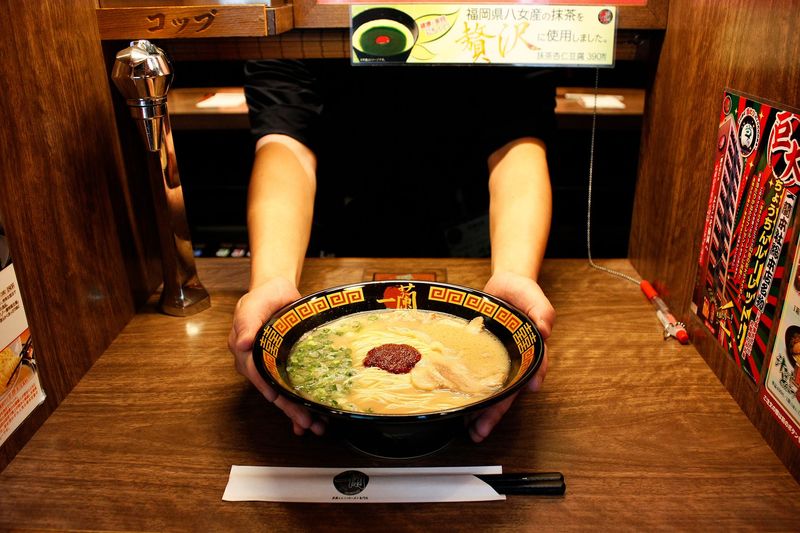
Ichiran Ramen is more than just a meal; it’s an experience of culinary satisfaction. As I entered the cozy shop, the aroma of rich broth filled the air, promising comfort in a bowl. The ambiance was uniquely intimate, with individual booths designed to focus solely on the flavors.
The first taste of the ramen was pure bliss. The noodles were perfectly cooked, swimming in a savory broth that had simmered for hours. Each element, from the tender chashu pork to the spicy red sauce, was crafted to perfection, offering a harmony of flavors that delighted the senses.
This isn’t just about eating; it’s about savoring each bite, appreciating the artistry that goes into every bowl. Ichiran Ramen captures the essence of Japanese comfort food, bringing warmth and satisfaction with every slurp. It’s a must-try for anyone looking to taste authentic Japanese cuisine.
11. Witnessing the Sumida River Fireworks
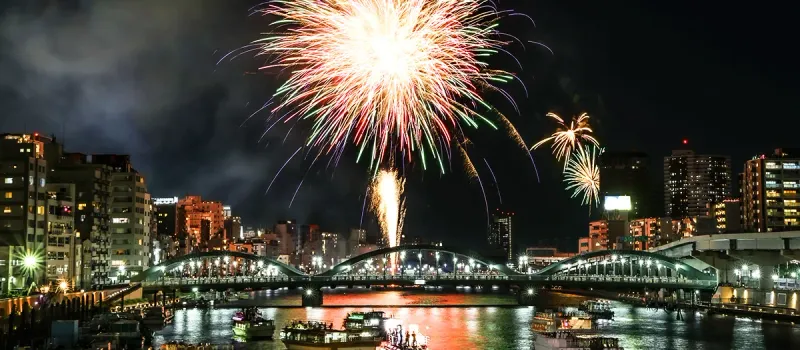
The Sumida River Fireworks Festival in Tokyo is a dazzling spectacle of color and light. As the first burst illuminated the night sky, a collective gasp rose from the crowd, followed by cheers of admiration. Each firework painted a vivid picture, a fleeting masterpiece against the dark canvas.
The river’s reflection added to the magic, doubling the brilliance of the display. The festival is not just about the fireworks; it’s a celebration of summer, a gathering of people coming together to share joy and wonder.
With each explosion, I felt a sense of connection to those around me, united in awe of the beauty before us. The Sumida River Fireworks Festival is a highlight of Tokyo’s summer, a tradition that brings people together in celebration of light and life.
12. Exploring the Ghibli Museum
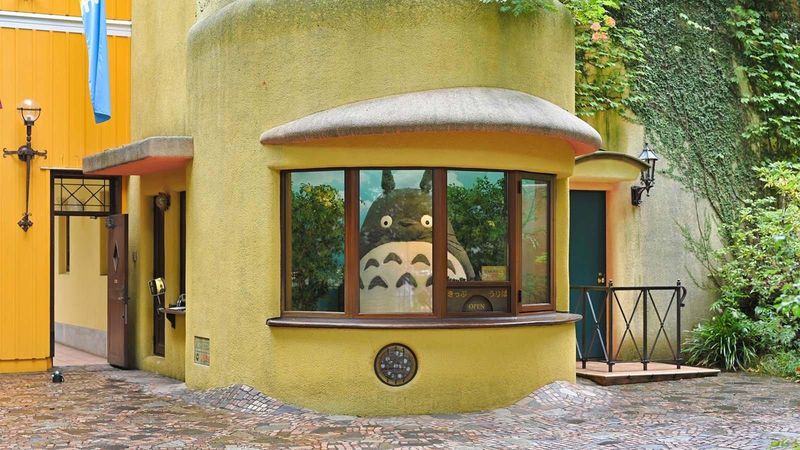
The Ghibli Museum in Mitaka is a gateway to the enchanting world of Studio Ghibli, a place where imagination knows no bounds. As I walked through the whimsical exhibits, I was transported into the vibrant worlds of beloved films, each corner brimming with creativity and wonder.
Meeting Totoro, the museum’s iconic mascot, was a delight, bringing to life the magic of Ghibli’s stories. The museum’s design itself is a work of art, with playful architecture and hidden surprises around every corner.
This isn’t just a museum; it’s an invitation to dream, to explore the limitless possibilities of animation and storytelling. The Ghibli Museum captures the spirit of adventure and creativity, leaving visitors of all ages enchanted and inspired.
13. Climbing Mount Fuji
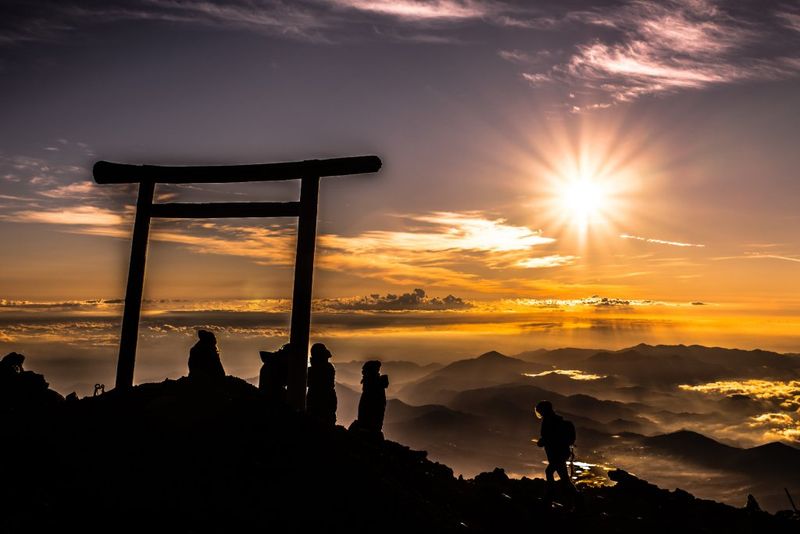
Climbing Mount Fuji was a journey of both challenge and reward. As I ascended the sacred peak, the air grew thinner, but the sense of achievement propelled me forward. The sunrise from the summit was a sight to behold, painting the horizon in hues of gold and pink.
The climb tested my endurance, but the camaraderie among fellow climbers made it a shared experience. We encouraged one another, driven by the promise of witnessing Japan from its highest point.
Mount Fuji is more than just a mountain; it’s a symbol of perseverance and aspiration. The view from the top is a reminder of nature’s grandeur and the heights we can reach with determination and spirit.
14. Shopping in Harajuku
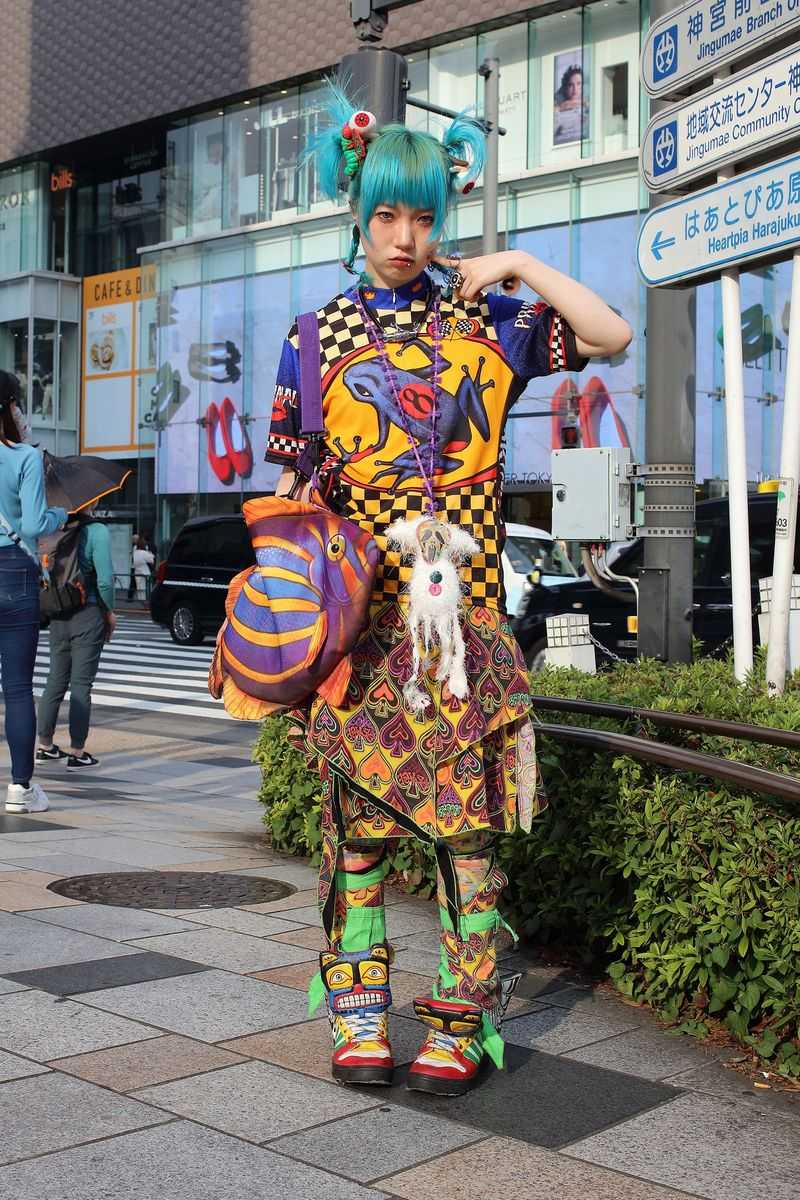
Harajuku is the epicenter of Tokyo’s fashion and youth culture, a place where creativity and individuality thrive. As I wandered through its vibrant streets, I was captivated by the eclectic mix of styles and trends. Each boutique offered a glimpse into the bold expressions of fashion that Harajuku is known for.
The energy was infectious, a celebration of self-expression and innovation. From quirky accessories to avant-garde fashion, Harajuku is a playground for the bold and the daring. It’s a place where the ordinary becomes extraordinary, where fashion transcends boundaries.
Exploring Harajuku opened my eyes to the limitless possibilities of style and creativity. It’s a testament to Tokyo’s dynamic spirit, a place where trends are born and identities are embraced.
15. Participating in a Tea Ceremony
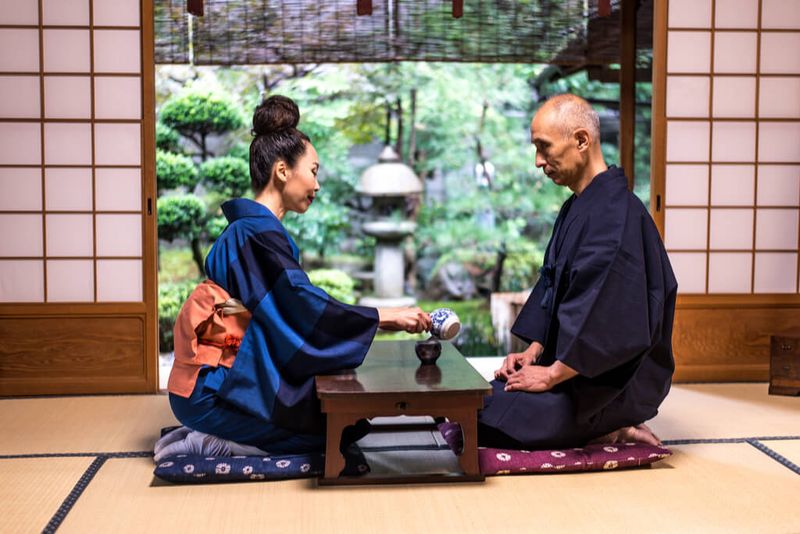
The Japanese tea ceremony is an art of grace and mindfulness. As I participated in this timeless ritual, I was enveloped in a sense of tranquility and respect. Each movement was deliberate, reflecting the harmony and simplicity at the heart of the ceremony.
The tea, carefully whisked to perfection, was a symbol of hospitality and the fleeting beauty of life. Sharing a bowl of matcha with others was a moment of connection, a reminder of the profound bonds created through simple acts.
The tea ceremony is more than just a tradition; it’s a philosophy of living in the moment, of finding beauty in the mundane. It taught me to appreciate the artistry in everyday actions, to savor the present with an open heart.
16. Visiting Hiroshima Peace Memorial Park
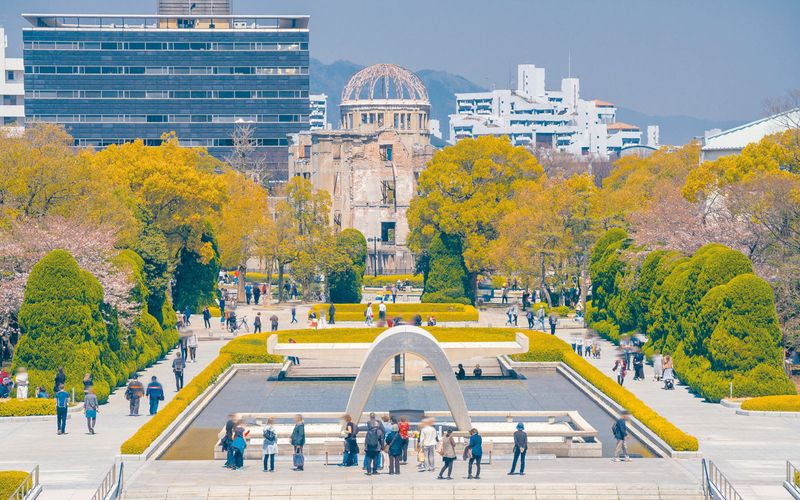
Hiroshima Peace Memorial Park is a poignant reminder of history and the resilience of the human spirit. As I walked through the park, the Peace Memorial and the A-Bomb Dome stood as symbols of hope and renewal. The air was filled with a solemn reverence, a silence that spoke volumes.
The park is a place of reflection, a tribute to the victims of the atomic bomb and a call for peace. Each monument tells a story, a reminder of the past and a commitment to a better future.
Visiting Hiroshima was a humbling experience, a testament to the power of healing and reconciliation. It’s a place that urges us to remember, to honor the past while striving for a world free from conflict.
17. Trying Traditional Kaiseki Cuisine
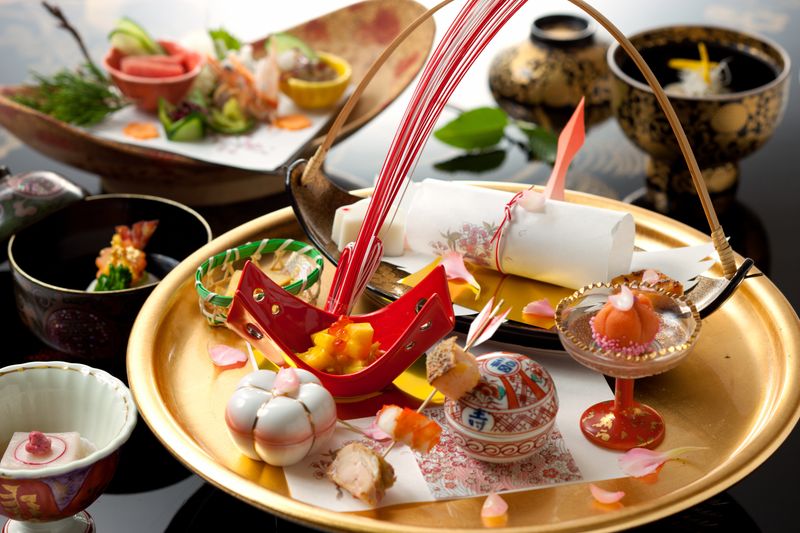
Kaiseki cuisine is the pinnacle of Japanese dining, a culinary journey that engages all the senses. Each dish was a masterpiece, meticulously crafted to highlight seasonal ingredients. As I savored the flavors, I marveled at the harmony of taste, texture, and presentation.
The meal unfolded like a story, with each course offering a new chapter of delight. From delicate sashimi to rich umami broths, kaiseki is an exploration of Japan’s culinary artistry and tradition.
Did you know that kaiseki originated from the tea ceremony? It evolved into a sophisticated dining experience, a celebration of nature’s bounty and the chef’s skill. Each bite was an invitation to appreciate the beauty and balance of Japanese cuisine.
18. Taking in the Views from Tokyo Skytree
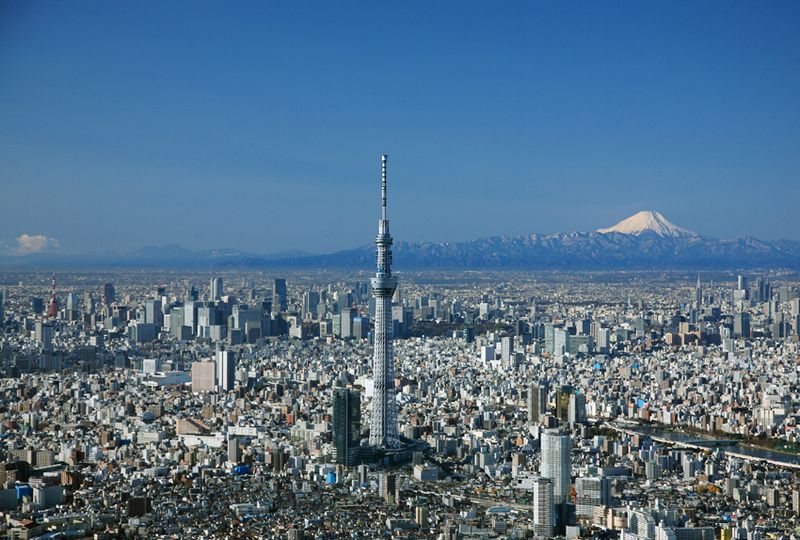
Tokyo Skytree offers a bird’s-eye view of one of the world’s most dynamic cities. As I ascended to the observation deck, the sprawling cityscape unfolded before me, a mesmerizing blend of urban ingenuity and natural beauty.
The view was breathtaking, with Tokyo’s landmarks visible in every direction. On a clear day, the sight of Mount Fuji in the distance added to the majesty of the scene. The Skytree itself is a marvel, a testament to Japan’s architectural prowess and forward-thinking vision.
Standing at such great heights, I felt a sense of wonder and admiration for the city below. Tokyo Skytree is more than just a viewpoint; it’s a symbol of Japan’s aspirations and achievements, a place where the sky is truly the limit.
19. Witnessing the Japanese Tea Garden
In the heart of Japan, a tea garden provides a serene escape from the bustle of city life. The sight of a middle-aged tea master, gracefully conducting a traditional ceremony, is a mesmerizing experience. The garden’s lush greenery and the calming presence of a koi pond add to the tranquility. It’s not just about drinking tea; it’s about embracing a centuries-old tradition. The tea ceremony symbolizes harmony, respect, and tranquility that resonates deeply with those who partake. Each sip invites reflection, making it a spiritual journey as much as a cultural one.
20. Exploring the Neon Nights of Dotonbori
Osaka’s Dotonbori district is a lively spectacle of neon lights and bustling energy. Nights here are filled with the vibrant glow of signage reflecting off the canal waters, creating an almost otherworldly atmosphere. Street vendors line the avenues, offering tantalizing scents of takoyaki and okonomiyaki, attracting locals and tourists alike. The cacophony of laughter and chatter blends with the sizzling of food, making every corner a new adventure. Dotonbori isn’t just a place; it’s an experience of sensory overload, leaving a vivid imprint on the memory. It’s where modern zeal meets traditional flavors.


